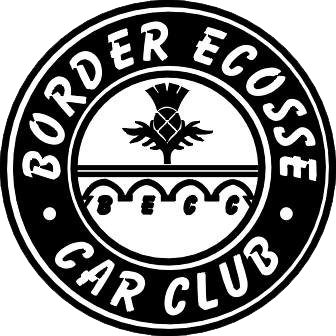Navigation rallies take place on public roads in more or less standard cars, usually in the hours of darkness. Navigational rallies are often referred to as “road rallies”, but strictly speaking there are some differences in the rules, and true road rallies are extinct in Scotland, though still flourishing in Wales.
Navigation rallies are legally restricted to an average speed of 30 mph. The object is to follow the correct route while maintaining this average speed, no faster, no slower. The “30 average” may not sound very fast, but that includes the time spent stationary working out the route on the map, there are a number of obstacles to slow competitors down; maintaining the required average speed in practice requires some enthusiastic driving. Being the fastest on the road is not the way to win a road rally.
The score is kept in terms of penalty points; you get a small penalty for being late at a time control (checkpoint), and larger penalties for being early, for missing out part of the route, for arriving at a checkpoint in the wrong direction, or for missing a checkpoint entirely.
The winners are the crew who follow the correct route, and arrive at each control on time; the navigation is at least as important as the driving.

